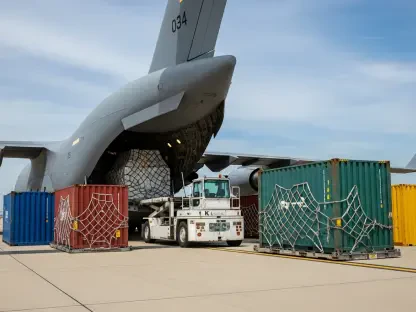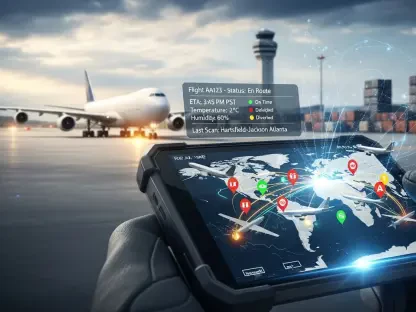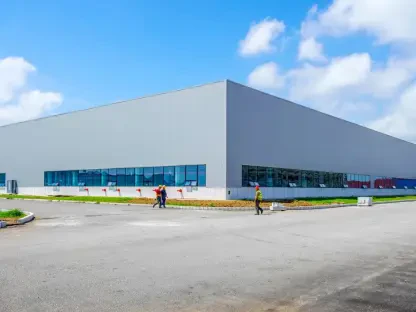The increasing adoption of onboard video safety systems by fleets is revolutionizing the trucking industry by offering numerous benefits, including exonerating drivers, improving safety, and providing coaching opportunities. However, one of the significant challenges faced by fleet managers is earning driver acceptance of these technologies. Many drivers often perceive the cameras as invasive, leading to resistance. This article explores effective strategies to gain driver trust and ensure the successful implementation of onboard video safety systems, thereby benefiting both the drivers and the fleet companies.
The Importance of Onboard Video Systems
Onboard video systems have become invaluable tools for protecting both drivers and companies from liability. These systems provide clear evidence in the event of an accident, which helps clarify the actual events and can exonerate drivers. A notable example is the case in Louisville, Kentucky, where forward-facing and in-cab cameras helped exonerate a truck driver and led to criminal charges against another motorist. This case highlights the critical role of video footage in protecting drivers and ensuring accountability, which underscores the importance of onboard video systems in the modern trucking landscape.
Beyond liability protection, onboard video systems are also employed for coaching purposes by fleet managers. By reviewing footage, they can provide constructive feedback, highlight exemplary driving practices, and address risky behaviors. This dual purpose of protection and improvement makes onboard video systems an essential component in contemporary fleets. They not only safeguard drivers from unwarranted allegations but also help in shaping better driving habits, which results in an overall enhancement of road safety and operational efficiency.
Overcoming Driver Skepticism
Despite the clear benefits, truck drivers often show resistance to the implementation of onboard cameras due to concerns over privacy and mistrust. Addressing these concerns head-on is essential to gain driver acceptance and ensure the successful integration of these technologies. Overcoming this skepticism requires transparent communication and demonstrating the tangible benefits of the system to the drivers. By openly discussing the advantages and addressing fears, fleet managers can pave the way for smoother adoption of video safety systems.
Effective communication is a cornerstone in overcoming driver skepticism. Fleet managers should involve drivers in discussions and the testing phases of new safety technologies. This participatory approach helps secure driver buy-in and ensures a smoother implementation. By involving drivers in the process, fleet managers can address their concerns directly and demonstrate how the systems are designed to enhance, rather than infringe upon, driver privacy and autonomy. This approach fosters a collaborative environment where the drivers feel valued and understood.
Communication Strategies for Driver Acceptance
Successful fleet managers emphasize the importance of clear and transparent communication when implementing onboard video systems. Building trust and alleviating driver concerns demand a communicative approach that clearly explains the purpose of the cameras and how they will be utilized to protect drivers and improve safety. Transparency ensures that drivers are not left in the dark about the reasons behind the implementation of these technologies, which is crucial for gaining their support.
Involving drivers in the testing and piloting phases of new safety technologies is another effective strategy. By allowing drivers to experience the benefits firsthand, fleet managers provide an opportunity for the drivers to voice their concerns and see the advantages directly. Addressing these concerns early on ensures that the implementation process is smoother and more accepted. This inclusive approach not only helps in alleviating fears but also demonstrates respect for the drivers’ input and their crucial role in the success of the implementation.
Coaching and Behavioral Improvement
Onboard video systems extend beyond mere liability protection and serve as valuable tools for coaching and behavioral improvement. Fleet managers can review video footage to provide constructive feedback to drivers, helping them correct risky behaviors and promote good driving practices. This proactive use of video data enables drivers to understand their strengths and weaknesses, which is key to continuous professional development and safety on the road.
Mark Murrell of CarriersEdge points out that there is a significant industry shift from using cameras solely for liability protection to incorporating them into comprehensive safety programs. Utilizing video footage for coaching allows fleet managers to continuously improve driver performance and enhance overall safety. By addressing risky behaviors before they lead to accidents, fleets can maintain a higher standard of safety and efficiency. This continuous improvement cycle is fundamental to fostering a culture of safety within the fleet, which benefits both the drivers and the company.
Ensuring Data Security and Privacy
With the integration of onboard video systems, concerns about cybersecurity and privacy have surfaced as paramount issues. Fleet managers must implement robust security measures to protect the data collected by these systems and ensure it is accessible only to authorized personnel. This includes measures such as multifactor authentication, controlled access policies, and scrubbing personally identifying details from the system. Addressing these concerns head-on is crucial for gaining driver trust and ensuring compliance with data protection standards.
Fleet managers should communicate clearly the steps taken to protect driver privacy. Ensuring that drivers understand the data is used solely for safety and coaching purposes can alleviate many concerns. Demonstrating a commitment to data security and privacy, including regular audits and transparent policies, helps in building trust. By showing that the company prioritizes driver privacy and data security, fleet managers can foster a more accepting attitude towards the implementation of video systems among drivers.
The Future of Onboard Video Systems
The trucking industry is undergoing a transformation with the growing use of onboard video safety systems by fleets. These systems bring numerous advantages, such as helping clear drivers of wrongdoing, boosting safety standards, and offering valuable coaching opportunities. Despite these benefits, fleet managers face significant hurdles in getting drivers to accept these technologies. Many drivers view the cameras as intrusive, creating resistance to their use. This article delves into practical strategies to build driver trust and ensure the effective deployment of onboard video safety systems, ultimately benefiting both the drivers and the fleet companies.
One key approach is transparent communication about the purpose and benefits of these systems. Drivers need to understand that these technologies are not meant to invade their privacy but to protect them and improve overall safety. Providing examples where video footage has defended drivers in unfair situations can help in gaining trust.
Additionally, involving drivers in the decision-making process can foster a sense of ownership and acceptance. Offering training sessions on how to use these systems and addressing any concerns can also ease resistance. By focusing on these strategies, fleet managers can create a more accepting environment, leading to smoother implementation of onboard video safety systems and enhancing the well-being of both drivers and fleet operations.








